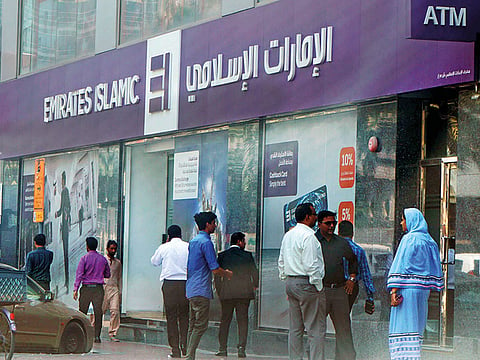Emirates Islamic eyes strong growth in retail banking business
The bank expects to see steady improvement in asset quality and retail financing originations due to improving economic conditions

Dubai: Against the backdrop of low single digit loan growth in the UAE in 2017, Emirates Islamic is targeting strong growth in retail financing business next year, Wasim Saifi, Deputy CEO, Consumer Banking and Wealth Management of Emirates Islamic told Gulf News in an interview.
“Overall retail personal financing [personal loans] growth in 2017 has been mostly flat but we have witnessed double-digit growth in some segments of retail business such as credit cards and mortgages, while auto financing remained under pressure as is the case across the market this year,” said Saifi.
After going through a challenging 2016, the bank’s results are showing signs of return to a strong growth trajectory this year with improvement in origination and sharp decline in impairments.
Despite market stress on retail credit and the SME business, our consumer banking delinquencies continued to remain stable in 2017, thanks to better informed underwriting as a result of data support from credit bureau.”
Wasim Saifi
Deputy CEO, Consumer Banking and Wealth Management of Emirates Islamic
The bank reported a nine-month net profit of Dh498 million, up fourfold compared to Dh106 million for the same period last year. For the third quarter of this year, Emirates Islamic reported a net profit of Dh111.70 million compared to a net loss of Dh30.8 million reported in the third quarter of 2016.
The bank’s impairment allowances improved by 41 per cent year-on-year at the end of the first nine months of this year due to overall improvement in market conditions, better informed credit underwriting and active management of risk.
“Despite market stress on retail credit and the SME [small- and medium-sized enterprises] business, our consumer banking delinquencies continued to remain stable in 2017, thanks to better informed underwriting as a result of data support from credit bureau. We believe, as far as retail financing impairments are concerned the worst is behind us,” said Saifi.
The bank expects to see steady improvement in asset quality and retail financing originations due to improving economic conditions in the UAE and more transparent underwriting tools available to the bank.
According to the latest forecast by the International Monetary Fund (IMF) the UAE’s economic growth is expected to bounce back in 2018. The IMF has projected a 1.3 per cent growth in the UAE’s real GDP in 2017, which it expects to surge to 3.4 per cent in 2018.
While Abu Dhabi’s gross domestic product (GDP) is expected to grow 3.2 per cent in 2018 compared to a meagre 0.3 per cent in 2017 and 2.8 per cent in 2016, Dubai’s GDP growth for 2018 is projected at 3.5 per cent compared to 2.9 per cent and 3.3 per cent in 2016, and 2017 respectively. Analysts say higher infrastructure spending related to Expo 2020 is expected to give boost to the job markets and retail demand.
“There are clear signs of improvement in the overall operating environment, which we expect will get translated into both asset growth, better asset quality and improved margins,” said Saifi.
The SME portfolios in the UAE that faced a sharp jump in impairments for more than two years have witnessed steady improvements in recent quarters. The bank expects it to have a positive impact on its asset quality and asset growth. “SME skip levels for overall industry have been dropping and we are seeing a more stable SME business environment. Our SME portfolio of relationship-managed accounts continue to grow well, with credit quality remaining under control,” said Saifi.
In a rising interest rate environment, the overall funding structure of the bank is expected to support its margins. Largely deposit funded, Emirates Islamic’s total deposits accounted for Dh40.8 billion at the close of the quarter. With the Current and Saving Accounts [CASA] balances up 4 per cent in the first nine months of the year from year-end 2016, it represents 70 per cent of total deposits compared with 67 per cent at the beginning of the year.
Strong liquidity position of the bank with a headline financing to deposits ratio at 87 per cent and capital adequacy ratio at17.1 per cent the bank has a hugely supportive balance sheet to make use of financing opportunities that will grow along with the improvement in the economy.
“In funding, costs of funding and liquidity we are in a stronger position today to gain market share. We expect financing opportunities to improve along with improvement in the underlying economy,” said Saifi.
Sign up for the Daily Briefing
Get the latest news and updates straight to your inbox


